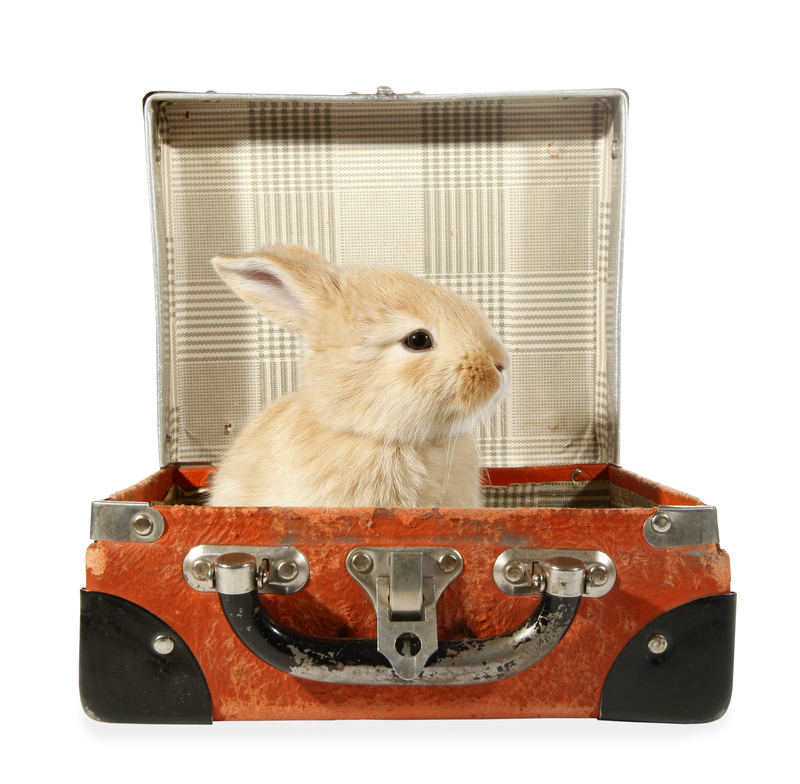How to Protect Your Freezer Over Months of Inactivity: A Complete Guide
If you plan to leave your freezer unused for several months--whether due to an extended vacation, seasonal property closure, or storage needs--it's crucial to take the proper steps to protect it. Long-term inactivity poses risks to the appliance's efficiency, hygiene, and lifespan. In this comprehensive guide, you'll discover essential tips on protecting your freezer during months of inactivity, maintaining its longevity, and ensuring food safety and reliability when you use it again.
Why Is Freezer Protection Needed During Inactivity?
Understanding why to protect your freezer during extended periods of inactivity is the first step in proper appliance care. Here are the main reasons:
- Odor prevention: A closed, unused freezer can develop unpleasant and persistent odors.
- Mold and mildew control: Residual moisture may invite mold and mildew growth, risking health and cleanliness.
- Mechanical protection: Inactive parts can become brittle or seize, making restart difficult or damaging components.
- Energy and safety concerns: Unattended running freezers can waste energy and become a potential fire risk if undetected malfunctions occur.
- Pest control: Food remnants may attract rodents or insects, causing damage.

Step-by-Step Guide: How to Safeguard Your Freezer During Long Inactivity
1. Unplug and Empty the Freezer
Before leaving your freezer dormant for months, it's best to disconnect it from power. Here's how:
- Remove all food items: Even non-perishable or frozen foods are at risk of spoilage if power fluctuates or fails during your absence. Emptying your freezer completely avoids stubborn odors.
- Check for leaks and spoilage: Inspect for any signs of spilled liquids or spoiled food, and dispose of them safely.
- Don't forget removable bins, trays, and racks: Take these out for separate cleaning.
2. Deep Clean the Interior
Give your freezer a thorough internal cleaning before locking it up for months. This removes food residue and prevents mold. To do this:
- Wipe with mild soap solution: Mix warm water and mild dish soap. Avoid harsh chemicals which can damage interior linings.
- Use baking soda for odors: Sprinkle and scrub with baking soda to neutralize lingering smells.
- Clean door seals and gaskets: These often collect food particles and are prone to mold. Clean with a mixture of water and vinegar for extra protection.
- Dry thoroughly before closing: Leave the door open for several hours or overnight to air-dry all surfaces. Moisture invites bacteria and mold.
3. Defrost the Freezer Completely
Most upright and chest freezers accumulate frost over time, which can melt and cause water damage or odors during idleness.
- Switch off and unplug the unit: Safety first!
- Let all ice melt naturally: Avoid sharp tools that could damage the lining. Place towels or a pan to collect melting water.
- Wipe dry after defrosting: Remove all residual water from nooks and crannies.
Tip: Schedule this process a day in advance of your intended shutdown for optimal results.
4. Clean and Protect the Exterior
Exterior maintenance is just as crucial. A neglected exterior may attract dust, pests, and corrosion over months of non-use.
- Wipe down surfaces: Use a damp cloth and mild detergent. Don't forget the back and sides, where dust collects most.
- Vacuum condenser coils: If accessible, carefully vacuum freezer coils to improve efficiency and reduce dirt build-up.
- Inspect the power cord: Look for signs of wear, fraying, or pests. Replace if necessary before next use.
5. Leave the Door Ajar
Never close your freezer door tightly during extended inactivity.
- Prop the door slightly open: This allows airflow to the interior, preventing any musty or moldy smells from developing.
- Use a door wedge or rolled-up towel: These keep the door open a crack (1-2 inches) without compromising safety.
- Secure against accidental closure: Make sure pets, children, or wind can't close the door accidentally.
6. Store in a Safe, Dry Location
Where you keep your idle freezer also matters in protecting its integrity.
- Choose a well-ventilated, dry area: Avoid basements prone to dampness or garages subject to temperature extremes and pests.
- Raise the freezer: If in a basement or garage, use pallets or blocks to avoid direct contact with the floor. This protects against accidental floods or condensation issues.
7. Pest-Proof Your Freezer
Unused appliances can become a haven for rodents and insects.
- Seal cracks around the unit: Make sure the area around your freezer is tightly sealed.
- Remove nearby food sources: Clean the surrounding room to eliminate attractants.
- Check regularly (if possible): If practical, inspect your freezer and the room every few weeks for signs of infestation.
8. Take Care of the Power Source
If you won't be using your freezer for multiple months, it's best to:
- Unplug the freezer entirely: This saves energy and eliminates risk of electrical fires due to power surges or malfunctions.
- Protect the cord: Use a cord wrap, and keep it off the ground to avoid damage by moisture or rodents.
Special Considerations for Seasonal Properties and Power Outages
Are you closing up a vacation home or lake house for the season? Here are some added protective measures for long-term freezer inactivity in such settings:
- Label and track shutdown day: Write down when you stop using and cleaning your freezer.
- Tell property managers or neighbors: If someone can check in periodically, ask them to confirm the appliance remains unplugged and doors ajar.
- Prepare for power outages: Any accidental power restoration during a storm could pose risks. Secure the unit so it cannot be accidentally powered up.
What If You Cannot Leave the Door Open?
Sometimes, space or safety may demand you keep the freezer closed--for example, to prevent children or animals from crawling inside. In such cases:
- Place baking soda or charcoal packets inside to absorb excess moisture and odors.
- Ensure the freezer is impeccably clean and perfectly dry before closing.
- Use child- or pet-safe locks on the door to prevent accidental opening.
Restarting Your Freezer After Inactivity
Once you're ready to use your freezer again, proper restart procedures help guarantee performance and food safety. Here's how to safely bring your freezer back online after months of non-use:
- Inspect the interior: Check for any signs of mold, pests, or odors before plugging in. If present, repeat deep cleaning steps as necessary.
- Plug in and turn on: Wait 1-2 hours before adding food to ensure the freezer reaches optimal temperature. Check for unusual noises or vibrations.
- Monitor performance: Place a thermometer inside and ensure the freezer achieves and maintains 0?F (-18?C) or below, as recommended by food safety standards.
- Test seals and gaskets: The door should close tightly and form a strong seal to maintain temperature and prevent frost build-up.
Common Mistakes to Avoid When Storing a Freezer for Months
- Leaving moisture inside: Always dry completely before closing or storing.
- Failing to clean thoroughly: Even small bits of food or residue can lead to big odors.
- Forgetting to unplug: An unused but running freezer is a fire risk and an energy drain.
- Not securing the door: Both full closure and wide openness can be problematic; keep it slightly open and secured.
The Environmental and Cost Benefits of Proper Freezer Inactivity Management
Following these steps not only protects your freezer, but also delivers environmental and financial advantages:
- Reduces energy waste: Unplugging during inactivity saves electricity.
- Extends appliance lifespan: Clean, dry, well-maintained freezers last years longer.
- Minimizes need for expensive repairs: Mold, rust, or pest damage can be costly or irreparable.
- Helps avoid food waste: Starting with a fresh, odor-free freezer means food stored later remains safe and tasty.

FAQs: How to Protect Your Freezer When Not in Use
Should I unplug my freezer if I won't use it for more than a month?
Yes! Unplugging is safer and saves on your energy bill. Just be sure to clean and dry it first, then prop the door open for ventilation.
Is it necessary to defrost the freezer before long-term storage?
Absolutely. Defrosting prevents water leaks, mold, and odors. Always start with an ice-free unit for extended inactivity.
Can unplugging my freezer cause damage?
No. Freezers are designed to withstand periods of inactivity. However, always unplug properly and protect the power cord from moisture and pests.
What should I do if my freezer smells bad after extended inactivity?
Deep clean the interior with baking soda and warm water, plus air it out thoroughly. For persistent odors, leave activated charcoal or baking soda inside with the door propped open for several days.
Conclusion: Ensure a Smooth Return to Use
Knowing how to protect your freezer over months of non-use is key to appliance hygiene, safety, and durability. By thoroughly cleaning, defrosting, drying, and leaving the appliance propped open--plus storing it safely and unplugged--you prevent common issues such as mold, odors, mechanical trouble, waste, and unnecessary repairs. Follow the outlined freezer protection steps above for peace of mind throughout your freezer's downtime, ensuring it's clean and ready when you next need it.
For more trusted advice on home appliance care, bookmark this guide and share it with friends who may be leaving a freezer unused for an extended period.



